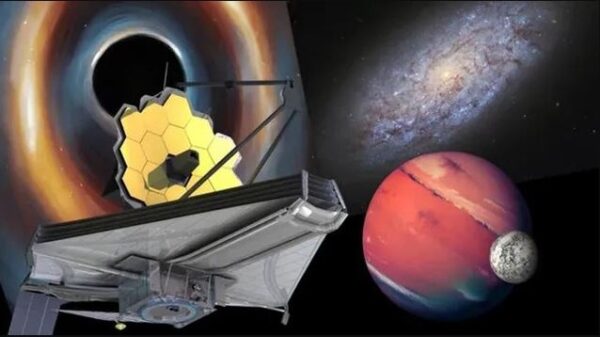The beloved James Webb Telescope (JWST) will soon begin work on its exciting to-do list for 2024 and 2025, including research on black holes, exoplanet moons, dark energy and more again.
The operator of the James Web telescope has outlined 253 Joint Observer (GO) programs that will use humanity’s most powerful and sensitive telescope for a total of 5,500 hours from July 2024 to June 2020. 2025. This range is known as Cycle 3 of JWST activities.
Cycle 3 will build on the scientific advances made by this $10 billion telescope over the previous two years, starting to transmit data again.
Some of the targets for JWST’s third year include potential exomoons or moons circling exoplanets, exoplanets incorporating their atmospheres, supermassive black holes and even even distant galaxies existed at the dawn of time.
JWST will also study large-scale structures in the universe to reveal details about the accelerating expansion of the universe and dark energy, the mysterious force driving that motion.
The hunt for exomoons is on
JWST in Cycle 3 will search for moons outside the solar system. They are called extrasolar moons, or simply “exomoons.”
David Kipping, assistant professor of astronomy at Columbia University, is part of the team hoping to find moons around the exoplanet Kepler-167e in particular. This gas giant is about the same size and mass as Jupiter and is 1,115 light years from Earth.
Searching for supermassive black holes
Astronomers believe that most large galaxies in our universe have supermassive black holes in their centers with masses as large as millions or even billions of suns. Some of these supermassive black holes are actively swallowing the gas and dust that surrounds them in disks of material called accretion disks.
The gravitational influence of these monster black holes is thought to heat the material in those accretion disks, causing them to emit bright radiation across the electromagnetic spectrum and creating regions called Active Galactic Nuclei ( AGN).
Additionally, any matter not swallowed by the black hole can be transported to its poles, where it is blown up by jets of particles moving at nearly the speed of light. When that happens, the phenomenon is called a quasar.
Study objects in the early universe
One of JWST’s main roles is to study objects in the early universe. This powerful telescope is capable of this because the expansion of the universe stretches the wavelengths of light from distant objects as this light travels toward us, moving the wavelengths toward the “beginning of the universe.” red” of the electromagnetic spectrum.
The longer that light takes to reach us, the more red it shifts. This means that light that has been traveling for about 12 billion years is extremely redshifted, entering the infrared region of the electromagnetic spectrum and beyond the visible range we can see with the naked eye.
In fact, infrared light is invisible to us. However, JWST is capable of observing this infrared light and thus helping to study the first stars and earliest galaxies, which it will continue to do in 2025 with several GO Chu projects. period 3.
Looking beyond JWST Cycle 3, the call for GO proposals for Cycle 4 will be launched on August 1 this year, with the deadline set for October 16 this year. The Cycle 4 Telescope Allocation Committee (TAC) review will take place from February 3 to February 12, 2025, with options revealed around March 5 next year. The JWST Cycle 4 GO programs will then begin making space observations on July 1, 2025.











